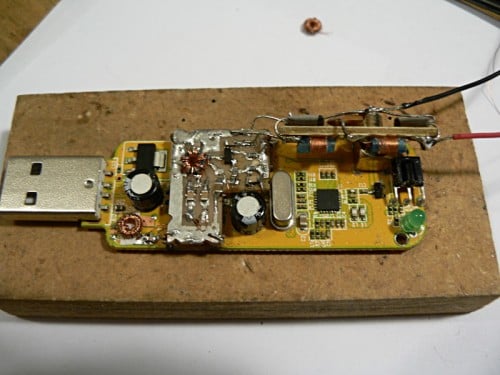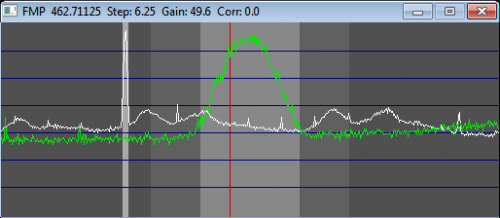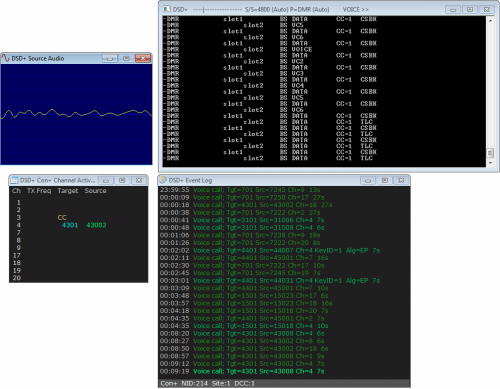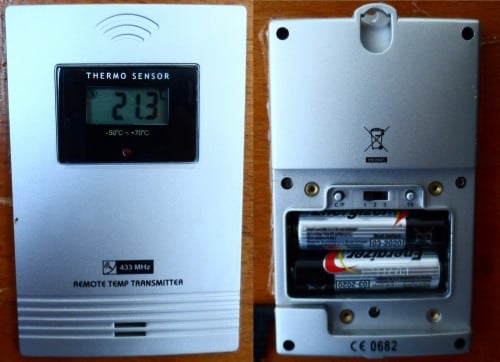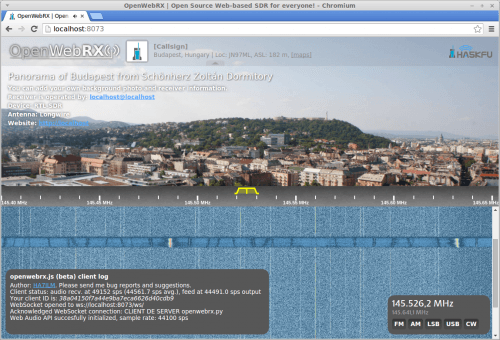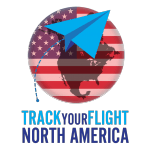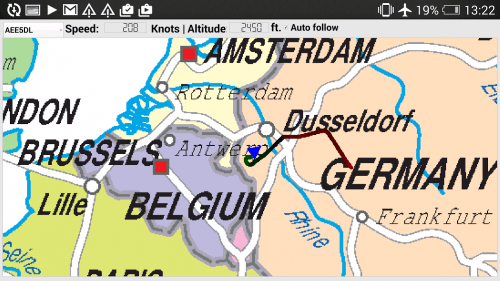An interesting RTL-SDR direct sampling modification
Over on the Reddit RTL-SDR discussion board user pksato has posted an image of his direct sampling modified RTL-SDR dongle. His mod includes a simple common base amplifier with 9dB gain, an impedance transformer with calculated output impedance of 50 Ohms and a 5V power filter.
The direct sampling mod allows you to modify your RTL-SDR to receive HF frequencies, without the need for an upconverter. It requires a hardware mod that can be as simple as soldering a wire to one of the RTL2832U pins, but for improved results you will need filters, impedance transformers and amplifiers. There is more information about direct sampling here.
More information and images about pskato’s mod can be found on the Reddit thread.
We also note that amateur radio hobbyist KN0CK (aka Marty Wittrock) sells direct sampling modified dongles that are modified in a similar way to pskato’s mod (circuit placed on top of the RTL-SDR PCB). His products can be found at http://www.kn0ck.com/HF_SDR/.
